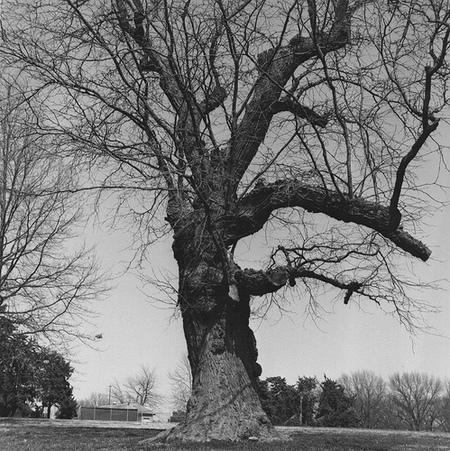On that memorable November 1863 day when President Abraham Lincoln delivered his Gettysburg Address at the dedication of the Soldiers National Cemetery (now Gettysburg National Cemetery), a young honey locust tree stood about 150 feet from the speakers platform. Being rooted on Cemetery Hill on the right side of the Union line, this tree, the "Gettysburg Address Honey Locust," was a silent witness to the Battle of Gettysburg that had raged there during three momentous days in July.
There were lots of other witness trees at Gettysburg in 1863, but as the decades passed nearly all of them succumbed to storms, disease, insect damage, or the various infirmities of old age. By August 2008, more than 145 years after the battle, only the honey locust and a few other witness trees were left at Gettysburg National Military Park.
Witness trees are precious. Civil War buffs and historians seek them out, take their pictures, touch them, and marvel that these living things were witness to the battle. In the case of the honey locust, you had a tree that was a witness to the burials that followed and, of course, to Lincoln’s speech for the ages. Soldiers had undoubtedly sat beneath it and taken comfort in its shade.
When a witness tree is lost, its passing is mourned.
During the evening of August 7, a storm raced through the park. The huge honey locust had shrugged off the effects of many such storms, but now it was very old, and this time was different. The storm severely damaged it, taking its top off and wrecking most of what it wasn’t torn away. Officials estimate that only about 20 percent of the tree remains intact, and that is probably not enough to give it a fighting chance for survival.
You really can’t expect a tree like this to be around much longer, anyway. It's not just that honey locusts are relatively fast growing and prone to lose branches in strong winds. They are also not particularly long-lived. It’s uncommon for one to live more than about 120 years. This one has been living on borrowed time for many years.
Park maintenance officials must decide what to do with the remains of the tree. Meanwhile, where there is life, there is hope.




Comments
Regarding this quote:
"When a witness tree is lost, its passing is mourned, as when a storm toppled a witness tree at Antietam National Battlefield last June. "
When I followed the link, I read that all the witness trees were spared in the June storm at Antietam; while a number of trees were lost, none were witness trees.
Also, I would like to see a photo of the Gettysburg witness tree after the storm. We were drenched by a sudden downpour while at the Cemetery in July and I may have stood under or near that very tree.
[Nice catch, Donna. I've edited out the flawed statement and inappropriate link. Damn that CRS! BJ]
A "before" photo of the intact tree can be seen at this site. I'm not sure I can find an after photo.
Are you sure onetreehillbuzz.com is the right link? That's what pops up when I click on "this site" on your August 11 posting. [Ed. Sorry. I deleted the link to the "after" site because the relevant story about the damaged tree is no longer available at the site.]